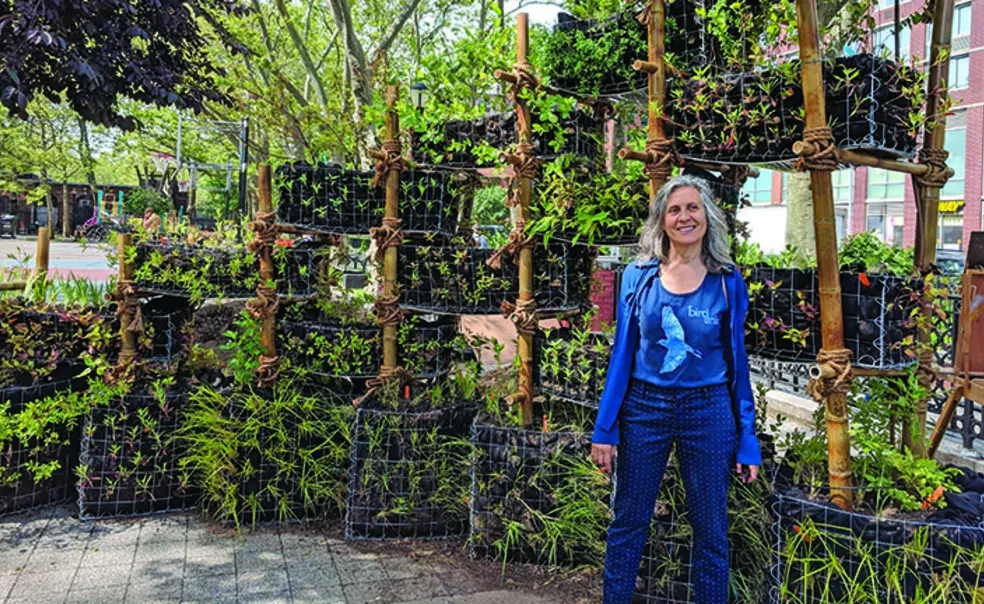Migratory Birds Flock to Anina Gerchick ’76’s Ecological Art
Living sculptures can reconnect migration routes like stones across a stream
A living sculpture in New York City beckons to the birds. Native plants lure tasty insects and offer a green rest stop along migratory routes too often broken up by cities.
This is Anina Gerchick ’76’s Birdlink — visually striking public art that benefits both humans and wildlife. The human-built environment takes away the green spaces that were once wildlife habitat, Gerchick says, and “I feel like people need to take responsibility for it.”
The idea came to Gerchick, an artist, while she was painting landscapes of New York City in 2010. She noticed the “contrasts and connections between concrete zones and green spaces” and thought about what the city looked like before buildings.
Gerchick already had an MFA from Bard College, but enrolled at City College of New York earning a master’s degree in landscape architecture in 2015. With a laugh she recalls doubting any landscape architecture firm would hire her at age 60, so “I forged my own path.” That path led to Birdlink.
The first site opened in 2018 on Governors Island and now stands at Marsha P. Johnson State Park in Brooklyn. Another stood at Sara D. Roosevelt Park in lower Manhattan, and another is planned for the Bronx this spring.
Each sculpture measures 9 feet by 16 feet by 2 feet — small enough to fit into spaces like road medians or traffic islands and built in modules that can be rearranged. Bamboo frames hold wire mesh “gabions” planted with perennials, replicating a horizontal meadow in a vertical structure.
New York City sits in right in a major migratory route for birds, Gerchick says, but the Birdlink sites can reconnect their path like stones you’d use to hop across a stream.
Gerchick has been gaining momentum and collaborating with an urban ecologist to gather data, improve, and expand. One discovery is that certain indigenous plants don’t hold up as well as drought-resistant ones in the increasingly hot summers, which makes sense as the USDA recently changed New York’s hardiness zone designation to “sub-tropical,” Gerchick says.
She’s heard from groups and municipalities across the country that are interested in bringing Birdlink to their communities, from Georgia to Arizona to universities in upstate New York. She’s also interested in putting a series of sites on the “islands” along Broadway, which runs north to south in Manhattan.
And she’s had interest from Princeton. The Student Birding Society and environmental engineering students have been working to bring a site to campus with support from evolutionary biology and ecology professors and the campus architecture office.
Progress has slowed during the pandemic, but in some ways the situation has shown that people need this outdoor art as much as the birds do, Gerchick says.
“I see a lot of opportunity for it, especially because everything outdoors is what we need right now,” she said. “We can’t be [together] indoors, but we have the opportunity to gather and work outdoors. We’ve seen parks are playing a big role in people’s lives.”
More information is at Birdlink’s website: Birdlink.World.












No responses yet